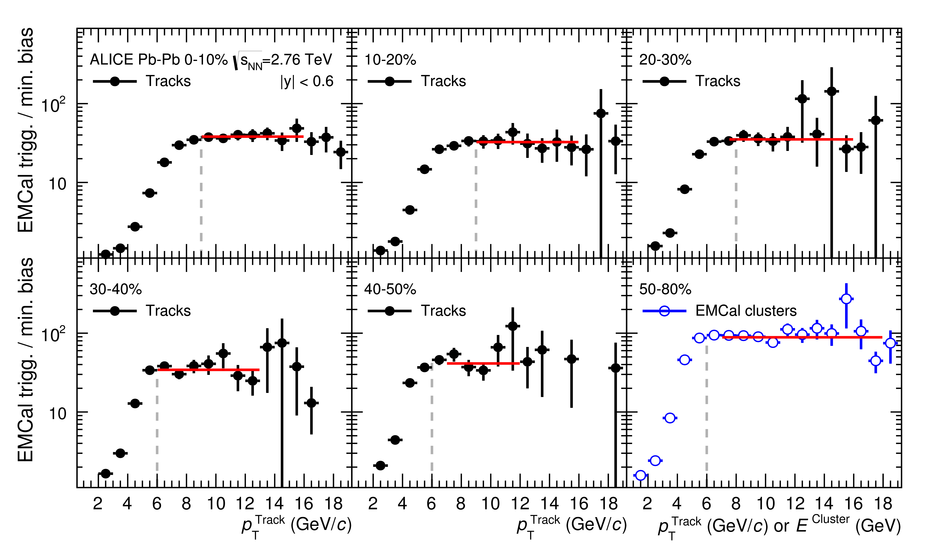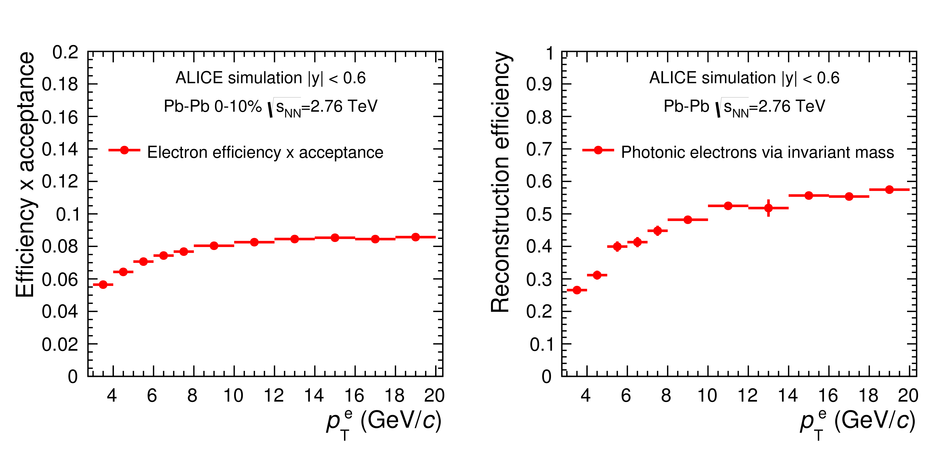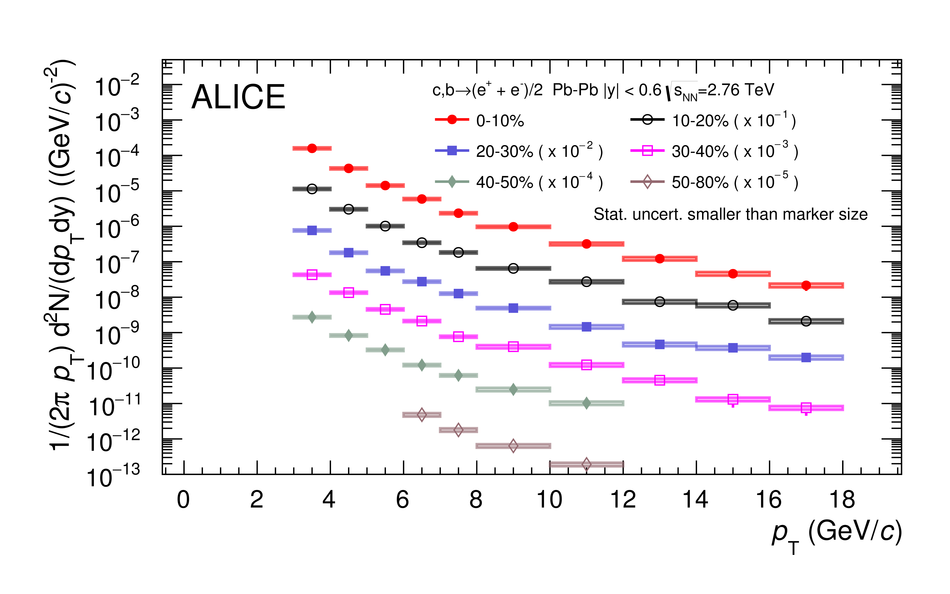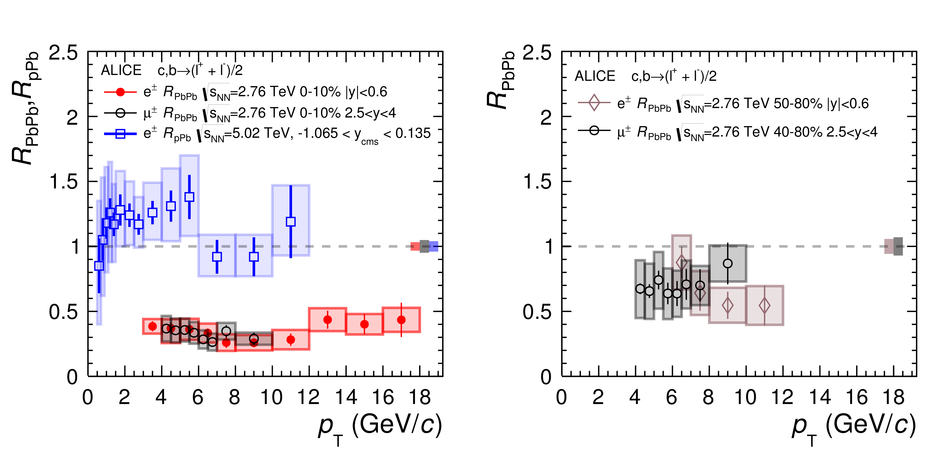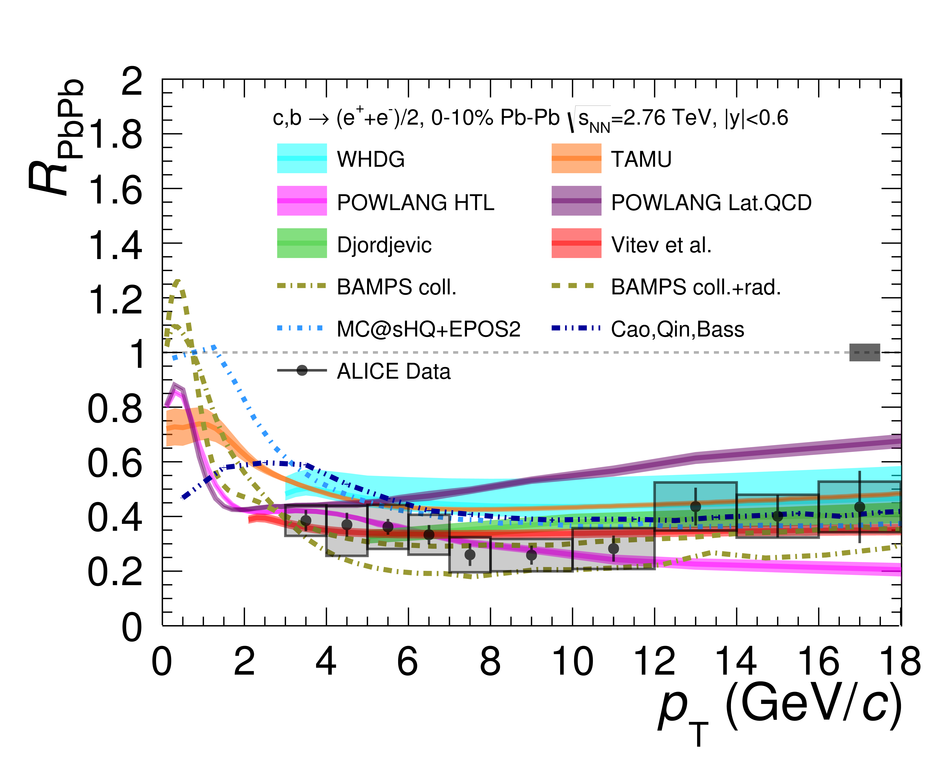Electrons from heavy-flavour hadron decays (charm and beauty) were measured with the ALICE detector in Pb-Pb collisions at a centre-of-mass of energy $\sqrt{s_{\rm NN}}=2.76$ TeV. The transverse momentum ($p_{\rm T}$) differential production yields at mid-rapidity were used to calculate the nuclear modification factor $R_{\rm AA}$ in the interval $3<~p_{\rm T}<~ 18$ GeV/$c$. The $R_{\rm AA}$ shows a strong suppression compared to binary scaling of pp collisions at the same energy (up to a factor of 4) in the 10% most central Pb-Pb collisions. There is a centrality trend of suppression, and a weaker suppression (down to a factor of 2) in semi-peripheral (50-80%) collisions is observed. The suppression of electrons in this broad $p_{\rm T}$ interval indicates that both charm and beauty quarks lose energy when they traverse the hot medium formed in Pb-Pb collisions at LHC.
Phys. Lett. B 771 (2017) 467-481
HEP Data
e-Print: arXiv:1609.07104 | PDF | inSPIRE
CERN-EP-2016-235

